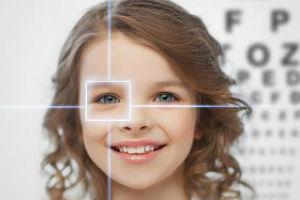
The focus this month is on children and contact lenses.
In this segment, we caught up with Mark Bullimore, MCOptom, PhD, FAAO, a clinical scientist whose many research interests include myopia and children’s vision.
Today we’re talking about children and contact lenses. The first question many people have is:
What is the right age for children to begin wearing contact lenses?
Dr. Bullimore: I think there are two issues – safety and competence. People may be worried about safety in younger children and really there is no reason from a safety point of view for children not to wear contact lenses. If anything, they are certainly safer than teenagers, they are certainly safer than college age kids and probably safer than adults as well.[1] The other thing is competence and their ability to manage and to handle the lenses. In the case of soft lenses, the kid's got to be able to put the lenses in, take them out, take responsibility for any cleaning and storage. Of course, with daily disposable lenses cleaning and storage are not an issue. If they are wearing the lenses to school, they perhaps ought to carry a case with them to school and be prepared to manage them if needed. If you look at studies that are being performed around the world we have a lot of data on younger kids now, and generally compliance tends to be good. These studies usually enroll kids as young as 8 and putting kids into contact lenses at 8 is certainly a very feasible option.
A recent study by the AOA[2] that looked at attitudes of fitting children with contact lenses among American optometrists. Essentially what was found is nearly all optometrists, 97-percent would fit kids under 18, but there was a very big divide between those that would fit children under 12 and those that would fit the teenagers.
What would you say to your colleagues that are hesitant to fit pre-teens in contact lenses? What do you think are some reasons where perhaps those children could have benefits from wearing contact lenses?
Dr. Bullimore: Again, I think it comes back to when is the kid ready. If the kid is able to function well with spectacles and there is no need from the point of view of their activities, their sports, and other things that they might engage in, then spectacles may be just fine. And then because of sports or because of other active lifestyle, because of, let us face it, some vanity on the part of the early teenager that is when they start to think about it themselves. I do think there is some natural conservatism among some practitioners. They do not suggest it; they do not think about it until the parent or the child or the teenager suggests it, and we see that for contact lenses in general. I think we can put kids and teenagers into contact lenses more frequently whether it is for a visual benefit, or whether it is for self-esteem reasons because we know kids self-image and self-esteem improves when we put contact lenses.[3]
Is a preferred modality of wear for children? An AOA survey found that most teenagers were fit in frequent replacement and this was thought to be primarily a financial reason.
So what do you think is the preferred modality for children and why?
Dr. Bullimore: A practitioner should take the time to explain the options and explain the benefits of different modalities. Personally, I think when you look at contact lens infections and you look at the risk factors for those infections, particularly the serious ones, they tend to be propagated or increased by handling lenses and storage of lenses.[4] If you can take the handling, the cleaning, the reusing, and the storage out of the equation with a daily disposable modality, you can minimize a lot of the risk factors for infections associated with lenses.[5],[6] I think it is particularly important when you get on to teenagers and college age kids. We know from data from the excellent CLAY study, (Contact Lens Assessment in Youth) that the 8 to 12 year old's are the safest and then the teenagers have a higher incidence of both low grade inflammatory events but also bonafide infections, and then it goes up even further in the college-age kids. I believe that the working hypothesis is that the increased incidence has to do with compliance and riskier behaviors like sleeping in lenses, topping up the solution, showering in lenses.[7] If we can promote a modality that really minimizes the risk then it is going to be best for everybody. I am a firm believer in daily disposable lenses over frequent replacement, but I do acknowledge that there will be a cost differential that will drive things.
What do you think are some of the sort of broadly held myths right now about ECPs in the US as it relates to children and contact lenses that really are not supported by the published data?
Dr. Bullimore: I do not think people realize how safe contact lenses are in the pre-teenagers. I think these are very safe products to be used in young children and I do not think a lot of practitioners give the kids enough credit when they think about their ability to manage lenses. I think we have seen from a multitude of studies both on self-esteem and myopia that kids can be put into contact lenses and manage them very well.
[1]Optometry and Vision Science: June 2017 - Volume 94 - Issue 6 - p 638–646
[3] Optom Vis Sci. 2009 Mar;86(3):222-32. doi: 10.1097/OPX.0b013e3181971985.
[7] Wagner H, Richdale K, Mitchell GL, et al. Age, behavior, environment, and health factors in the soft contact lens risk survey. Optom Vis Sci 2014;91:252–61.








